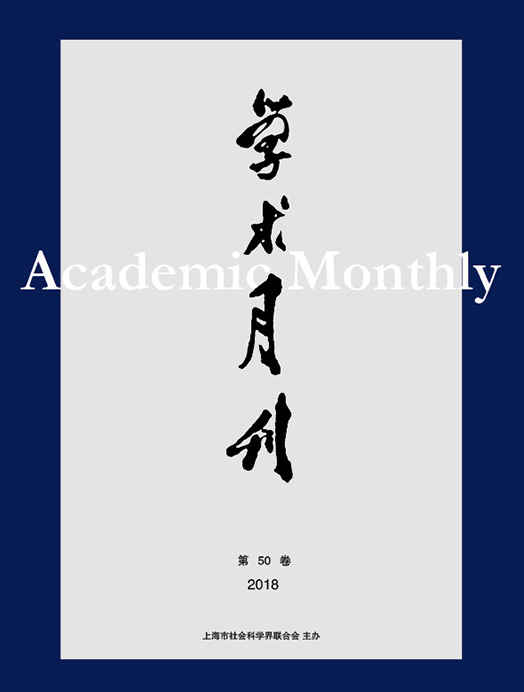Citation:
Donglan HUANG. Space as A Metaphor[J]. Academic Monthly, 2019, 51(2): 152-166.

-
Abstract
This paper focuses on the interrelationship between the three spatial concepts of " Toyo”, " East Asia” and " Eastern Eurasia” appeared in the historiography of Japan since the middle of the Meiji period. The author argues that there were " spatial turns” in Japan’s modern historiography on the study of the relationship between China and its surrounding world. Firstly, in first Sino-Japanese War of 1894−1895, Toyoshi(Oriental History) subverted the Confucian tradition of Hua-yi narrative with China as the center of Tianxia (" 天下”) by emphasizing the " equal” competition and confrontation between the Han Chinese and the surrounding ethnic groups. Secondly, the theory of East Asian World proposed by Nishijima Sadao after the World War II emphasized that Japan has historically belonged to the " East Asian World” centered on the Chinese Empire. Thirdly, in recent years, the research of " Eastern Eurasia” focuses on the " North-South issue,” namely, farming and nomadic, Han and non-Han issues, and echoes the " decentralized” narrative of East Asian history with the pre-war Oriental history.
-

-
References
-
Access
-
-
[1]
Yuanbao GAO
. Lu Xun Belongs to the World More Than to East Asia. Academic Monthly,
2020, 52(1): 121-141.
-
[2]
Weiguo ZHANG
, Shuang WANG
. The Rise of the Great Powers: Eastern Asian Model andChinese Road. Academic Monthly,
2019, 51(10): 67-81.
-
[3]
WANG Zhengxu
. What is Good Government—— East Asian Peoples Evaluation of Government Legitimacy and Competence. Academic Monthly,
2023, 55(10): 75-87.
-
[4]
Li Lei
. . Academic Monthly,
2018, 50(5): 154-162.
-
[5]
Huaying DENG
. The Spread and Reconstruction of State Type Theories in Modern East Asia. Academic Monthly,
2021, 53(8): 206-216.
-
[6]
. . Academic Monthly,
2016, 48(03): 120-127.
-
[7]
. . Academic Monthly,
2017, 49(06): 111-119.
-
[8]
Q. Edward Wang
. Interdisciplinary Practice of the History of Emotions— A Discussion Centering on the Development of the History of Emotions in Japan. Academic Monthly,
2023, 55(6): 169-179.
-
[9]
. . Academic Monthly,
2017, 49(10): 162-177.
-
[10]
Min WANG
, Huijie GAN
. A Study on Japan’s Attitude in the Negotiation of the Surrender of Supao Case Prisoners. Academic Monthly,
2021, 53(4): 195-204.
-
[11]
. . Academic Monthly,
2018, 50(02): 29-47.
-
[12]
. . Academic Monthly,
2016, 48(07): 157-173.
-
[13]
Rongtang TANG
. The Spread of the Revolutionary Ideology of the Communist Party of China in Japan around the May 30th Movement. Academic Monthly,
2022, 54(11): 207-216.
-
[14]
Xiaoyu LI
. How Do Images “Serve the History”. Academic Monthly,
2022, 54(12): 153-164.
-
[15]
Guorong YANG
. “Affair” and “History”. Academic Monthly,
2019, 51(1): 11-23.
-
[16]
TAO Fuwen
. The Memory Field of Historical Criminal Evidence:Military Songs and Japan’s War Memory. Academic Monthly,
2024, 56(2): 175-186.
-
[17]
Haifeng JING
. Classics: From Studies to History. Academic Monthly,
2019, 51(11): 5-14.
-
[18]
. . Academic Monthly,
2017, 49(12): 134-143.
-
[19]
ZHAO Jing
. . Academic Monthly,
2018, 50(9): 149-161.
-
[20]
Fulin CHAO
. A Supplementary Explanation of the Inscriptions in “Historical Wall Plate”. Academic Monthly,
2019, 51(11): 150-157.
-
-



 沪公网安备 31010102003103号
沪公网安备 31010102003103号 DownLoad:
DownLoad: